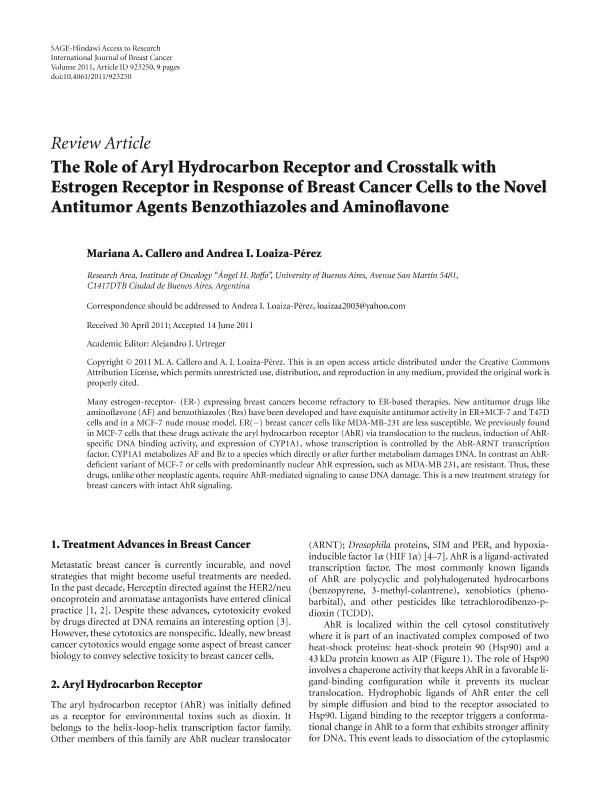Artículo
The role of aryl hydrocarbon receptor and crosstalk with estrogen receptor in response of breast cancer cells to the novel antitumor agents benzothiazoles and aminoflavone
Fecha de publicación:
09/2011
Editorial:
Hindawi Publishing Corporation
Revista:
International Journal of Breast Cancer
ISSN:
2090-3189
Idioma:
Inglés
Tipo de recurso:
Artículo publicado
Clasificación temática:
Resumen
Many estrogen-receptor- (ER-) expressing breast cancers become refractory to ER-based therapies. New antitumor drugs like aminoflavone (AF) and benzothiazoles (Bzs) have been developed and have exquisite antitumor activity in ER+MCF-7 and T47D cells and in a MCF-7 nude mouse model. ER(−) breast cancer cells like MDA-MB-231 are less susceptible. We previously found in MCF-7 cells that these drugs activate the aryl hydrocarbon receptor (AhR) via translocation to the nucleus, induction of AhR-specific DNA binding activity, and expression of CYP1A1, whose transcription is controlled by the AhR-ARNT transcription factor. CYP1A1 metabolizes AF and Bz to a species which directly or after further metabolism damages DNA. In contrast an AhR-deficient variant of MCF-7 or cells with predominantly nuclear AhR expression, such as MDA-MB 231, are resistant. Thus, these drugs, unlike other neoplastic agents, require AhR-mediated signaling to cause DNA damage. This is a new treatment strategy for breast cancers with intact AhR signaling.
Palabras clave:
Aryl Hydrocarbon Receptor
,
Breast Cancer
,
Benzothiazole
,
Aminoflavone
Archivos asociados
Licencia
Identificadores
Colecciones
Articulos(OCA HOUSSAY)
Articulos de OFICINA DE COORDINACION ADMINISTRATIVA HOUSSAY
Articulos de OFICINA DE COORDINACION ADMINISTRATIVA HOUSSAY
Citación
Callero, Mariana Alejandra; Loaiza Perez, Andrea Irene; The role of aryl hydrocarbon receptor and crosstalk with estrogen receptor in response of breast cancer cells to the novel antitumor agents benzothiazoles and aminoflavone; Hindawi Publishing Corporation; International Journal of Breast Cancer; 2011; 9-2011; 1-9, 923250
Compartir
Altmétricas




